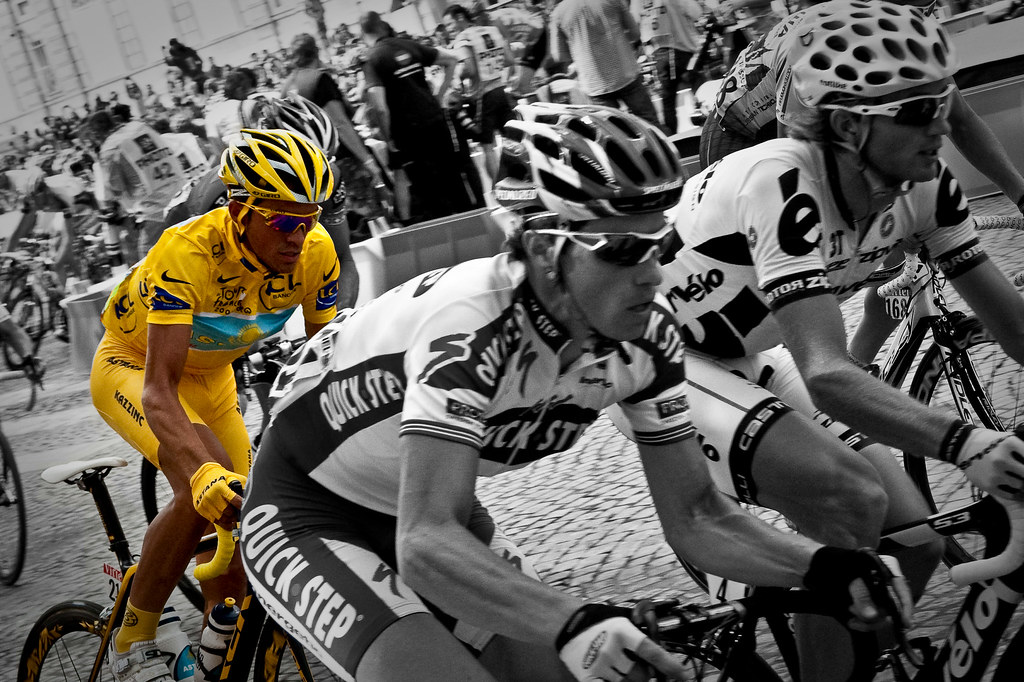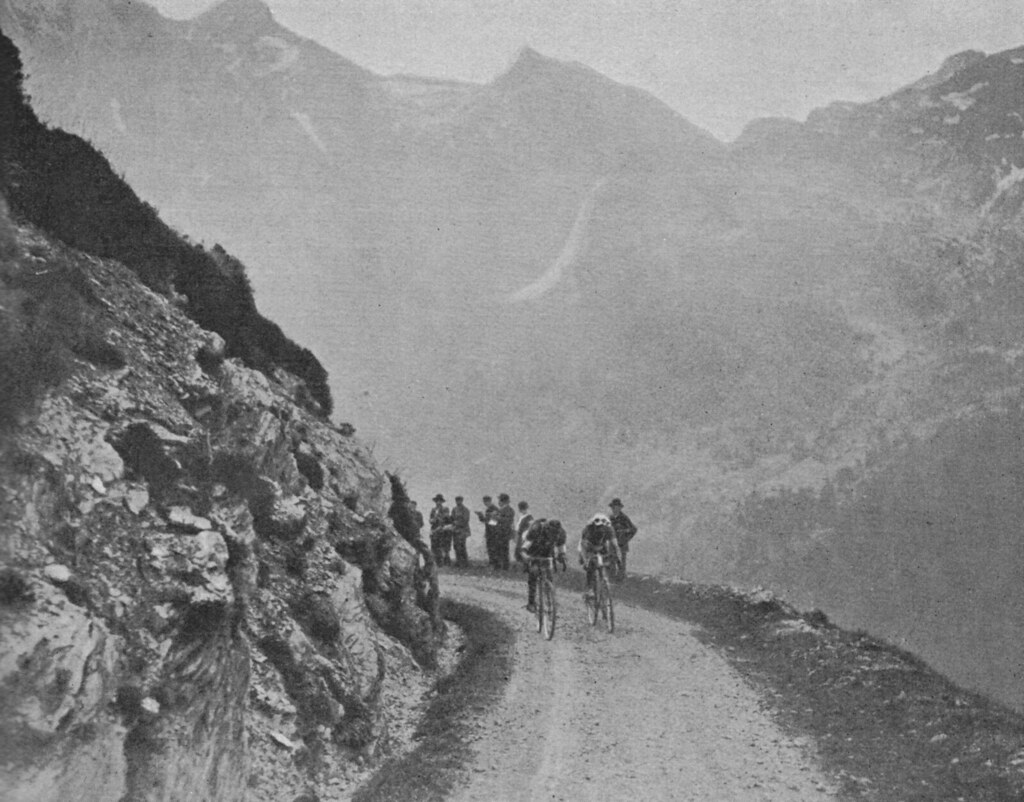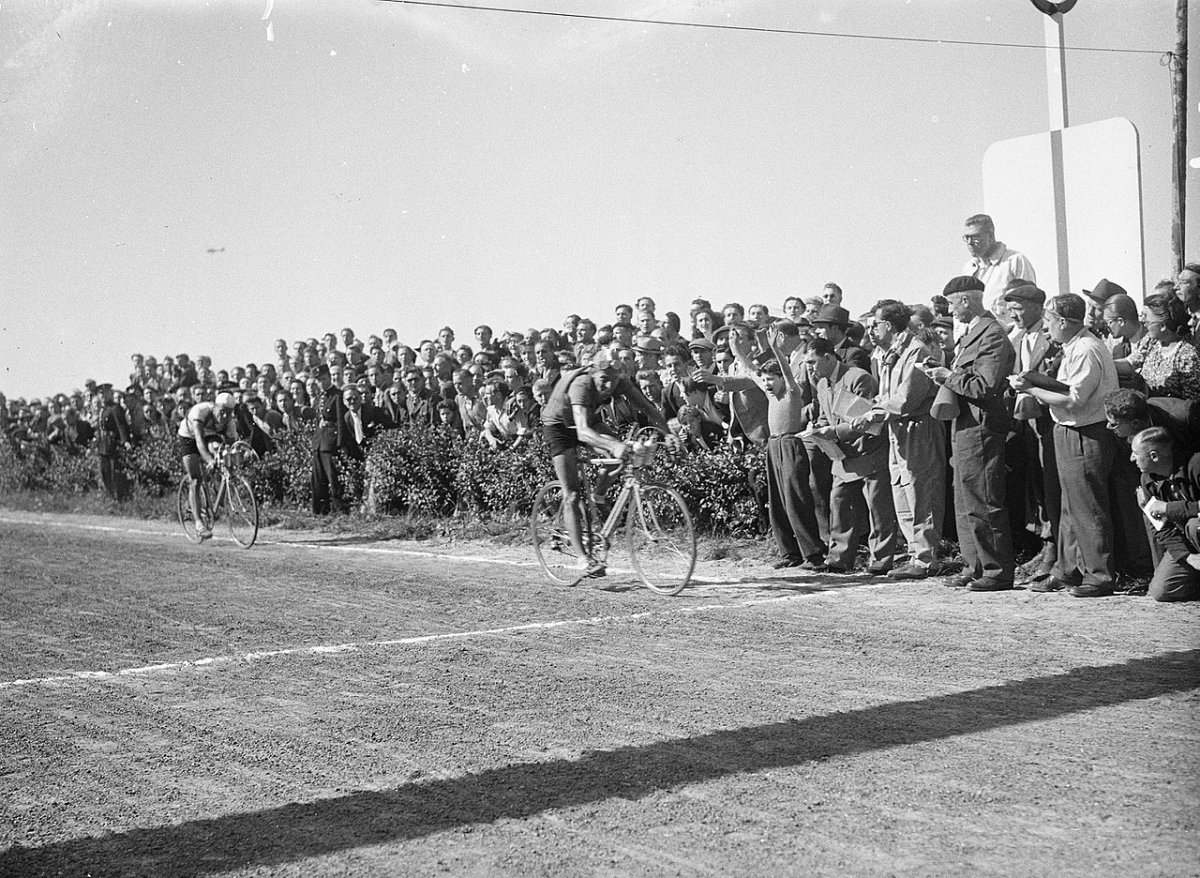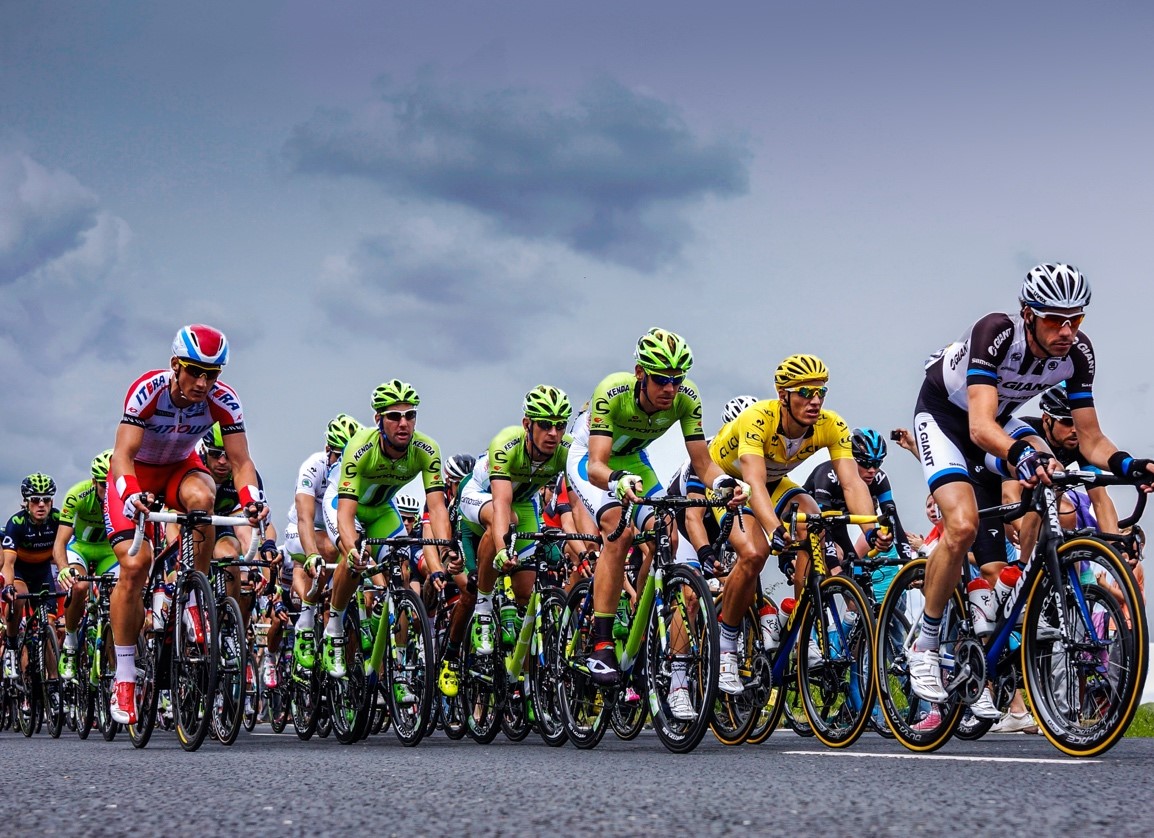2009 Tour de France winner, Alberto Contador, wearing the yellow jersey on June 26, 2009.
The iconic yellow jersey of the Tour de France is the medal and physical jersey awarded to the race’s overall winner.
The Tour de France is the most famous cycling race in the world. Held over the course of 23 days, this race for male cyclists features 21 stages that demand its participants climb mountains, speed over flat lands, and navigate small, sometimes cobble-stoned streets in villages and towns throughout France.
The Tour bestows the yellow jersey after each day of racing to the cyclist with the fastest overall time. This means that the yellow jersey can change hands multiple times over the course of the race and that the yellow jersey is not necessarily awarded to the winner of that day’s stage—the day’s faster rider may not have the race’s quickest total time. While several cyclists might wear the yellow jersey during the three-week competition, only one will ultimately win it.
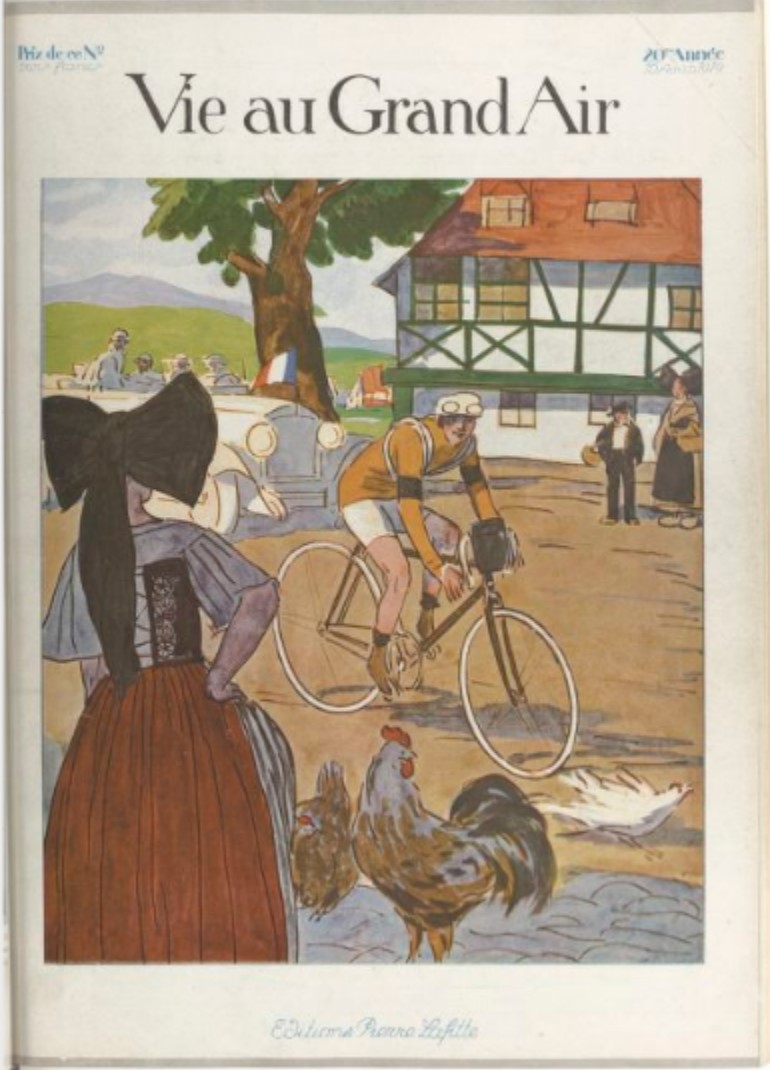
The Tour’s organizers first awarded the yellow jersey so that gathering crowds could easily identify the race’s leader. The jersey did not make its debut until mid-July 1919, nearly a month into the race. In the first few years of the Tour, the leader would wear a green armband to signal his lead. However, the crowds of spectators were much larger in 1919 and the armband was not visible enough. Thus on July 19, 1919 in Grenoble, Eugene Christophe, that day’s leader, debuted the yellow jersey on the road. Yet, he would not keep it. Firmin Lambot won the first-ever yellow jersey on July 27, 1919 in Paris.
The Tour began in 1903 as the creation of the sports newspaper L’Auto. Editors of the paper believed that by creating a race that took cyclists throughout France over multiple weeks, which the paper would cover exclusively, they could drum up more readership. The 2019 race, which began on July 6 and ends on July 28 in front of the Arc de Triomphe, will have covered 2,162.6 miles and included 176 riders from 22 teams.
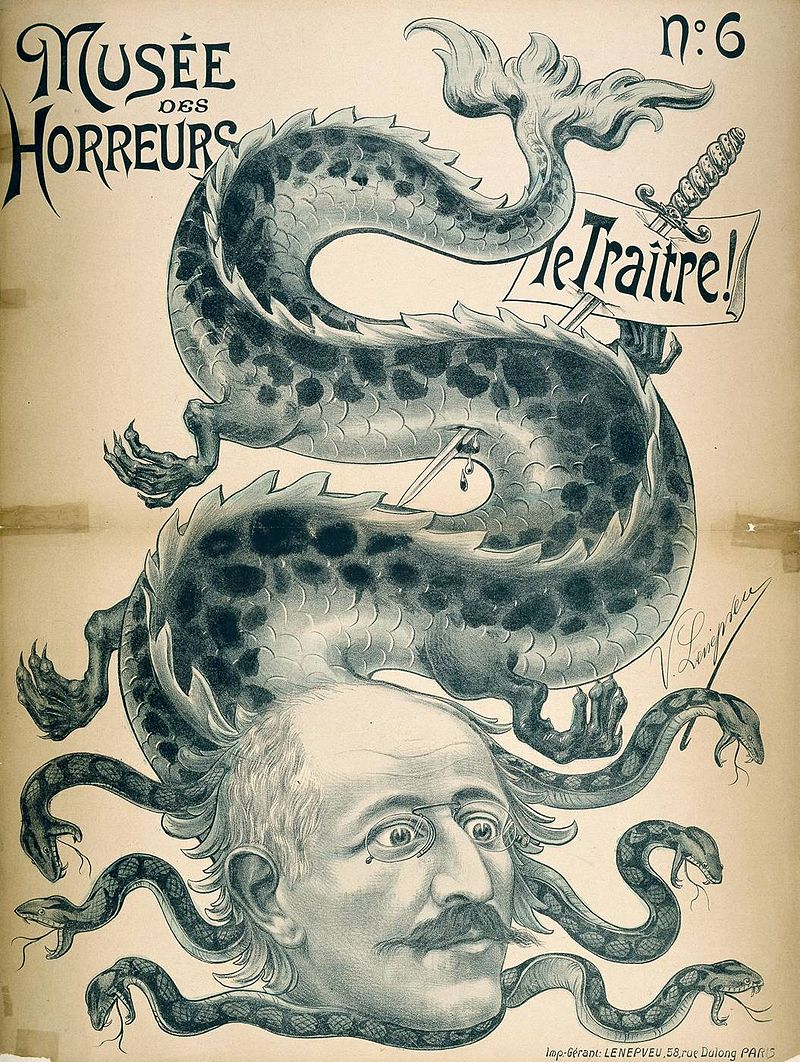
Anti-Semitic caricature of Alfred Dreyfus in the French nationalist series “Museum of Horrors.”
But the Tour also has roots in the notorious Dreyfus Affair of the 1890s, which divided France bitterly.
The “affair” centered on Alfred Dreyfus, a Jewish army captain falsely accused of espionage. Dreyfus was tried, found guilty and sentenced to life imprisonment on Devil’s Island, though the identity of the real spy had already been discovered. The Dreyfus Affair became a flashpoint in the French Third Republic triggering debates about what French identity meant and who belonged to the nation.
Not even sports papers were able to escape this debate.
Advertisers, unhappy with the leadingsports paper’s support of Dreyfus as well as the rising price of advertising space, pulled their ads and decided to fund the rival L’Auto. L’Auto used yellow newsprint and many believe the yellow color of the jersey was selected to mimic this hue. Ultimately, the Tour was born out of blistering competition and vigorous debate over who could be considered “French.”
Tour de France 1928 participants.
Originally, the race asked cyclists to travel an average of 250 miles per stage often with racers pedaling through the night on unpaved and unlit roads. Twenty-three cyclists abandoned the race on its very first day, which spanned nearly 300 miles from Paris to Lyon, and only 23 of the original 60 cyclists finished. Marketed as the most demanding bicycle race in the world, the Tour de France’s current iteration is not quite so arduous. The longest stage in 2019 is a mere 142 miles.
When the tour first began in 1903, the idea that France needed to be united via a “tour of France” had already been enshrined in the French school system with the novel and school text, Le tour de la France par deux enfants (“The Tour of France by Two Children”). First published in 1877, the story follows two orphans as they traverse France, learn about its history, regions and populations, uniting all of France under one identity in the wake of the country’s defeat in the Franco-Prussian War and the loss of Alsace and Lorraine.
Ferdinand Kübler winning the first stage of the 1947 Tour de France.
The Tour de France has become both a celebration of France, its history, and landscapes and a means by which the race unites France with its neighbors. It was only in the aftermath of another war—World War II, one that tore Europe apart—that the Tour de France ventured outside of France’s borders for the first time.
In 1947, the race entered into Belgium and Luxembourg in the hopes of bringing together a few countries ravaged by the war. Much like France through its participation in the European Union has tied itself closer to other European states, the Tour de France also moved beyond its national borders to celebrate French identity as part of a European identity.
Since first moving some stages out of France in 1947, the Tour has only held a mere six races solely within the borders of France. In the last decade, the Tour has hosted stages in Belgium, the United Kingdom, Andorra, Germany, Switzerland, the Netherlands, Italy, Spain and Monaco.
Moreover, the race has become a global sports event, stretching beyond France’s borders and its neighbors to reach audiences thousands of miles away. No longer exclusively covered by L’Auto, broadcasters and journalists from across the world flock to France to report on the Tour.
The Second Stage of the 2014 Tour de France.
Today, the French Minister of Culture provides all television commentators—both French and non-French—with descriptions of historical events, cultural sites, French agricultural products, and natural wonders to accompany the helicopter footage of the French countryside and cities. This script highlights the treasures of France: inspiring pride amongst the French and stimulating tourism.
No longer promoting a single newspaper, the Tour has evolved to promote France.

